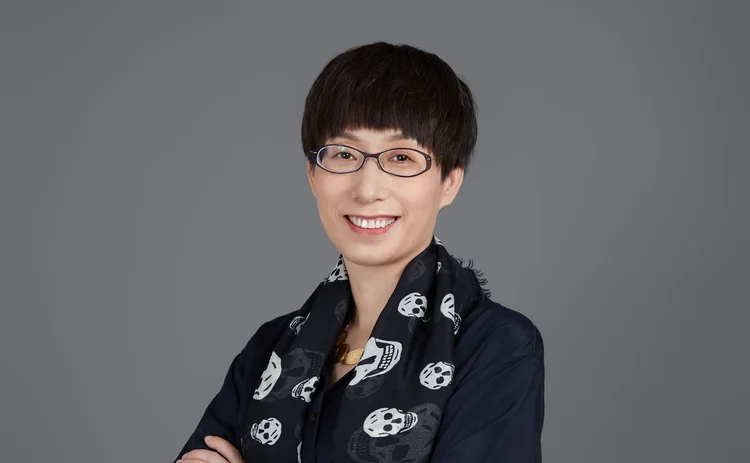
House of the year, China: CICC
Asia Risk Awards 2022

Over the past 12 months strong adherence to sound risk management principles has seen China International Capital Corporation (CICC) weather persistent market uncertainty better than many of its competitors.
“Compared with our competitors we have a lot of advantages in this business,” says Chen Kang, equity department mainland China head. “We have a deep understanding of the Chinese market, an extensive product shelf and strong risk management skills. All of this allows us to maintain a leading position in the market and continue to make money.”
CICC is one of the two original pioneers of China’s derivatives market. The company was first handed a licence for onshore derivatives trading in 2013.
“This was at a time when most onshore investors had no idea what a derivative was or what they could do with the instruments,” says Kang. “But we had faith that, based on own analysis and the size of the economy, Chinese capital markets would sooner or later follow the path of more developed markets such as those in Europe or the US.”
China’s derivatives market remains under-developed. Based on figures from the Bank for International Settlements, the daily average notional of over-the-counter derivatives traded in China in 2019, $152 billion, was less than 1% of the nearly $16 trillion traded worldwide at the time.
But with the introduction of the country’s new futures law – a crucial piece of legislation for the derivatives market – in August, the trajectory remains clear, and CICC wants to help write the next chapter.
“Although the competition now is fiercer than before, we retain a leading position in the market. Some of the most popular structured products in China at the moment were first introduced by our house,” says Shoukun Sun, equity derivatives and structuring head.
For example, while CICC wasn’t the first house to bring snowballs to China, it does claim to be the first to have introduced Phoenix worst-of-basket snowball structures, which knocked out in July this year, to the market. It also claims to have been the first to introduce a range of unique pay-offs to China’s structured products market.
Healthy risk management
Back in 2013, CICC’s onshore structured products business faced limited competition. The same is not true today, with more than 30 local derivatives traders vying for a slice of the action.
Greater competition clearly brings some benefits: new innovations, improved customer service, more efficient pricing. But there are dangers, too. In particular, having more people in the market could tempt some to take on greater risk in order to win market share.

But CICC is determined to keep a sound grasp of its risk management, which has helped boost its standing among clients this year.
“In terms of risk management, it has probably been the most difficult year since 2018 for the derivatives dealers, and investors across the market got hit quite heavily,” says Kang.
Although the competition now is fiercer than before, we retain a leading position in the market. Some of the most popular structured products in China at the moment were first introduced by our house
Shoukun Sun, CICC
While revenue has been declining at many other structured products houses this year, Kang says CICC has been able to avoid the worst of the slowdown by being able to respond quickly to changing market needs.
This requires a deep understanding of the Chinese market, a team of highly skilled product structurers and the confidence to bow out of structures at the right time, even if they are proving popular with clients.
One example of this occurred last September, when the CSI 500 (an index of small and medium-sized stocks traded on the Shanghai and Shenzhen stock exchanges) surged to a record level of 7,200.
CICC quickly stopped issuing autocallable structures linked to this index.
Such structures, known as snowballs, are very popular on the market. They typically have two barrier prices: a ‘knock-out’ barrier and a ‘knock-in’ barrier. When the knock-out barrier is reached, the product pays out in the investor’s favour. When the knock-in barrier is reached, the investor loses money.
“We realised the market had become very hawkish, and we didn’t think the market fundamentals supported such high levels,” Kang says.

CICC switched the snowball structures that it was offering to high-net-worth clients to reference the CSI 300 instead, which Kang says was much safer.
The hiatus on CSI 500 snowball products lasted about one month. When CICC eventually brought them back towards the end of 2021, the firm had introduced some improvements: a step-down feature that increased the odds of the product knocking out each month while limiting downside risk.
In this way, CICC was able to significantly reduce the number of products that knocked in for clients. Kang says that while the knock-in rate for the market overall may have been as high as 80% during April, CICC managed to stick to a knock-in rate of around 50%.
“This is just one example of how we were able to guide a market to trade a structure we believed was safer given market conditions at the time,” says Kang.
There were a number of other similar innovations this year too, all intended to help manage risk in fairly turbulent times – not only for the clients but for the long-term health of CICC itself.
“By tweaking product structures in this way, we can help our clients manage downside risk in market conditions that are not that stable,” says Miao Song, equity derivatives solutions cross-border trading head. “They also help our own risk management perspective because we don’t want the Chinese market to become another Korea, with a high concentration in a single structure. That’s too dangerous.”
Song says diversification is key: diversification of structures, diversification of underlyings and diversification of clients.
“If we have a diversified structure in our portfolio, the risk can be reduced – otherwise if we stick with one single pay-off, the market can become very, very toxic in a quick sell,” says Song.
Only users who have a paid subscription or are part of a corporate subscription are able to print or copy content.
To access these options, along with all other subscription benefits, please contact info@risk.net or view our subscription options here: http://subscriptions.risk.net/subscribe
You are currently unable to print this content. Please contact info@risk.net to find out more.
You are currently unable to copy this content. Please contact info@risk.net to find out more.
Copyright Infopro Digital Limited. All rights reserved.
As outlined in our terms and conditions, https://www.infopro-digital.com/terms-and-conditions/subscriptions/ (point 2.4), printing is limited to a single copy.
If you would like to purchase additional rights please email info@risk.net
Copyright Infopro Digital Limited. All rights reserved.
You may share this content using our article tools. As outlined in our terms and conditions, https://www.infopro-digital.com/terms-and-conditions/subscriptions/ (clause 2.4), an Authorised User may only make one copy of the materials for their own personal use. You must also comply with the restrictions in clause 2.5.
If you would like to purchase additional rights please email info@risk.net
More on Awards
Clearing house of the year: LCH
Risk Awards 2025: LCH outshines rivals in its commitment to innovation and co-operation with clearing members
Best use of machine learning/AI: CompatibL
CompatibL’s groundbreaking use of LLMs for automated trade entry earned the Best use of machine learning/AI award at the 2025 Risk Markets Technology Awards, redefining speed and reliability in what-if analytics
Markets Technology Awards 2025 winners’ review
Vendors jockeying for position in this year’s MTAs, as banks and regulators take aim at counterparty blind spots
Equity derivatives house of the year: Bank of America
Risk Awards 2025: Bank gains plaudits – and profits – with enhanced product range, including new variants of short-vol structures and equity dispersion
Law firm of the year: Linklaters
Risk Awards 2025: Law firm’s work helped buttress markets for credit derivatives, clearing and digital assets
Derivatives house of the year: UBS
Risk Awards 2025: Mega-merger expected to add $1 billion to markets revenues, via 30 integration projects
Interest rate derivatives house of the year: JP Morgan
Risk Awards 2025: Steepener hedges and Spire novations helped clients navigate shifting rates regime
Currency derivatives house of the year: UBS
Risk Awards 2025: Access to wealth management client base helped Swiss bank to recycle volatility and provide accurate pricing for a range of FX structures







